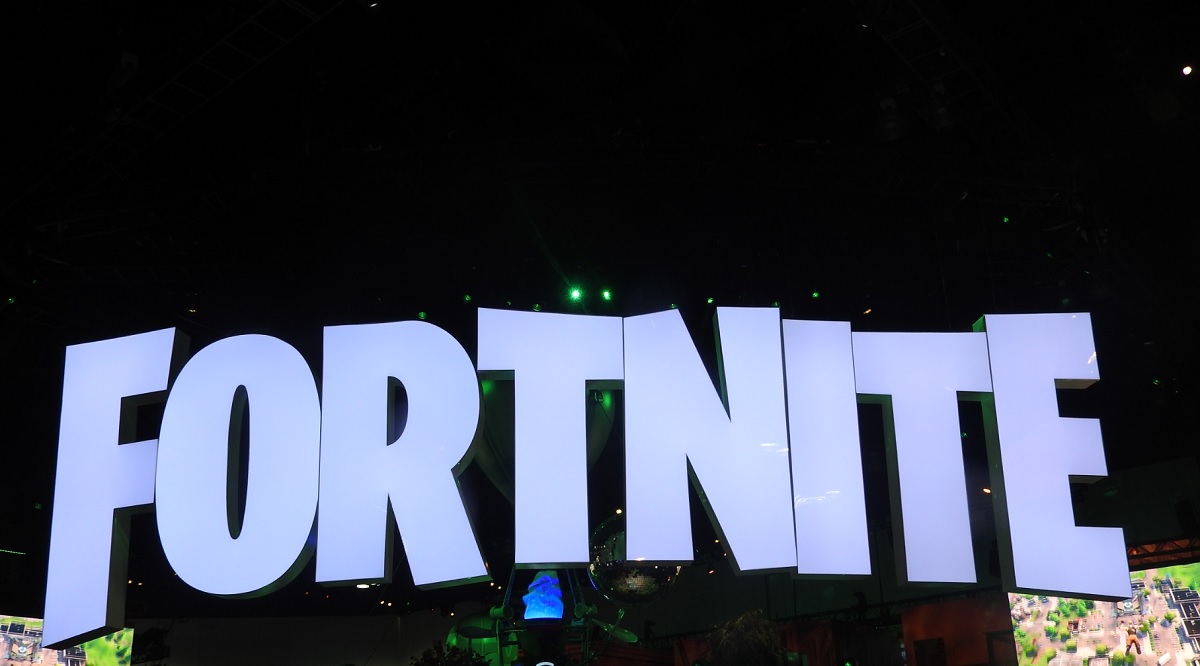testsetset
Tim Sweeney is quiet as CEOs go. But the head of Epic Games isn’t shy when it comes to expressing his opinions about the state of games, game development, and the need for open technology initiatives to ensure the industry’s future growth. Epic Games is launching Fortnite on Android soon, using direct downloads from the Epic Games site rather than the Google Play store.
I talked about to Sweeney in advance of the launch of the Android version of Fortnite, which now spans all major platforms on consoles, mobile, and PC. The game is a living example of how you can take an Unreal Engine game and make it run across any platform where people want to play games. I have loaded the game on an Android device using Epic’s Fortnite installer, and it worked.
We talked about the launch of Fortnite on Android. But we also had a wide-ranging discussion about how Fortnite is helping with the development of the Unreal Engine, the importance of blockchain to the open Metaverse, the rise of Fortnite esports, why you won’t find Fortnite on Google Play, and Sweeney’s ongoing efforts to ensure that gaming remains as open a business as possible.
Here’s an edited transcript of our interview.

Above: Tim Sweeney is the outspoken CEO of Epic Games.
GamesBeat: This must have been a lot harder to do, because there are so many versions of Android. How did you approach covering all the ground?
Tim Sweeney: That’s a general issue with Android. There’s a huge variety of OS versions and also a much wider range of hardware specs than any other device family, from a $30 phone you can buy in India to a $1,000 high-end device. The nature of Fortnite determined the direction here. Fortnite is the same game on all platforms, including high-end consoles and PCs. Fortnite is going to work on high-end Android devices. Of the 2.5 billion Android devices in the world or so, 300 million will run it well.
GamesBeat: Is it just on the Oreo version of the OS, or will you get to more versions than that?
Sweeney: The actual Android version isn’t as much of a determining factor as the CPU and graphics processor set. Any device from up to three years ago with a high-end GPU should run the game pretty well. Oreo brings a large set of improvements to the installation experience. It’s a much better open platform with a much better installation process for software from other sources than the Google Play store. But the game is broadly compatible with everything that meets the specs.
GamesBeat: It’s an interesting technology statement. Is it also fun to play, when you’ve got mobile people against PC people?
Sweeney: If you’re playing alone as a mobile player, or you’re squadding up with other players on Android and iOS, you’ll be matchmade only with other mobile players. You have parity there. If you want to squad up with people on other platforms, Android supports cross play with every console, computer, and mobile platform. Then you’re matchmade with the general population of the game, which can include mobile, PC, and console all together. If you choose to do that, there are going to be players with different controllers. That’s up to you.
What we’re finding, really, is that the magic of the experience is that everyone can play together with all of their friends. In a single living room you can have a PlayStation player, someone on their laptop, someone on an iOS device, and someone on an Android device all playing in a single game session together. The experience of being together socially is so awesome that it kind of negates the control differences.
GamesBeat: Sony still hasn’t quite made everyone happy, though, right?
Sweeney: Every case of cross-platform play and cross-platform purchasing is supported except for the pairings of PlayStation and Xbox, and PlayStation and Switch. As an Xbox or PlayStation player you can still play together with PC and all the smartphone devices. In a typical living room scenario, if you have a console and a laptop and some people on smartphones, you have pretty good connectivity there.
GamesBeat: When you have iOS playing with Android, what kind of experience is that going to be?
Sweeney: That works great. They’re platforms with similar ranges of performance and similar controls. The experience feels perfectly natural. It’s essentially the same games on all platforms, albeit with separate control schemes for PC, mobile, and console. All mobile devices have the same control scheme. There’s a lot of parity in the behavior there.

Above: Fortnite won’t be in the Google Play store.
GamesBeat: You guys just announced the Unreal Engine 4.20 this week. Does that come into play here at all as far as the timing of the Android version of Fortnite?
Sweeney: For the past six months we’ve done a huge amount of work to optimize the Unreal Engine for all mobile devices, and especially optimizing for Android compatibility and Android performance with Vulkan and OpenGL. All the optimizations we’ve done to date for Fortnite on Android are in that version. The real goal of all of this that we’re doing with Unreal Engine is make it possible to build a console-quality game, one of the most beautiful high-end games in the industry, and then release it on everything, reaching a much larger audience than just the owners of high-end gaming-focused devices.
As a console developer you’re targeting an installed base of, what, 80 million PlayStations, maybe half that many Xbox Ones, and the growing Switch market? The smartphone space has literally billions of devices that can play these games, depending on the performance tradeoffs. It’s a huge opportunity for everybody.
GamesBeat: Do you already see some games in the pipeline that are going to do this, to go across all the platforms with Unreal?
Sweeney: ARK: Survival Evolved, the dinosaur survival game, is coming to iOS and Android. That’s just one of them. In Korea, where there’s not a lot of console market, we’re seeing some incredible console-quality games at the top of the mobile game charts. Games like Lineage 2: Revolution. They’re really bringing hardcore gaming experiences to these devices. That’s just stuff that’s been announced. There’s a lot more in the pipeline.
I think we will see, over the next two years—a huge theme in the whole game industry will be connecting all of the platforms together and reaching the entire base of gamers. It’s going to lead to huge growth. When gamers can play a game together with all of their friends, regardless of the devices they own, you have a much more compelling social experience. That applies to all multiplayer games.

Above: Epic Games takes a shot at sideloading Fortnite on Android phones.
GamesBeat: How do you view this as helping in your competition with Unity. Does this bring you into parity with them, or does it put you ahead of them in some ways?
Sweeney: Well, we really have different focuses. Unity is a kind of engine for the everyman. It’s a super accessible engine that supports a huge range — pretty much every Android device you can buy today will run Unity games. It’s targeted at indie developers, casual games, mobile games. Whereas Unreal Engine has long been dominant in high-end games, games for gamers, console games, PC games, and now these high-end mobile games. The majority of high-end mobile games at the top of the charts in Korea are in Unreal, and that’s happening in China as well.
We’ve long seen this kind of indie versus triple-A production value split between Unity and Unreal. The move of mobile gamers to high-end games really will lead to significant growth in the adoption of those high-end games and that’s good for Unreal. But both engines are strong. There’s a need for both of them to exist.
GamesBeat: The strategy of Epic making its own games and Unity not making its own games — it kind of looked a little shaky when you were doing Paragon, but now it looks brilliant with the arrival of Fortnite.
Sweeney: We’ve always used our internal game development to push our engine forward, to tease out all the performance and optimization and opportunities there, so that all game developers can benefit from the work we’re doing. It’s especially important at the high end. The complexity of shipping a game like Fortnite across all these platforms — a very open-world game, 100-player networking, advanced graphics — it pushes the engine in all directions. I can’t imagine how you could possibly build the technology base for a game like Fortnite without developing a game like that yourself.
GamesBeat: And that’s come back to help in the form of a financial windfall, too. You’ve talked about doing a different kind of split with developers on your asset store.
Sweeney: Yeah, the Unreal Engine Marketplace is an exchange site focused on game developers. Content creators release assets like models and textures and animations there, and game developers can buy them to incorporate them in their games. A lot of the major successful Unreal Engine games are based on content from there. ARK: Survival Evolved and PUBG use a huge amount of Unreal Engine Marketplace stuff.
The awesome thing about Fortnite is it’s brought a huge volume of digital commerce to Epic. We can now do that very efficiently. We can handle payment processing and customer support and download bandwidth with some great deals. We’re passing the savings along with the Unreal Engine Marketplace. We’ve change the royalty split from the 30/70 you see everywhere to developers getting 88 percent. We find that’s a great boon for developers.
The thing to understand about quality indie developers, and also asset creators, is that a large part of their income goes to costs. If they’re making a 10 percent profit from their business, going from 70 percent to 88 percent triples that margin. It makes a huge difference in their ability to compete, to hire people and to grow. I really hope there’s a better trend in the industry toward economic efficiency in distribution. Mastercard or Visa will process payments for 2.5 percent or 3.5 percent per transaction. These stores taking 30 percent is just out of line. There’s a 4X profit margin or more.

Above: Look out below. Here comes Fortnite on Android.
GamesBeat: A lot of people, like Brian Fargo, are saying blockchain could be useful in helping improve that efficiency and getting down to lower percentages.
Sweeney: Yeah, it could. There was an article about somebody making a trade of $100 million worth of Bitcoin, and of course there’s a transaction processing fee associated with that, and it was something like seven cents? That’s the ultimate extreme of efficiency in digital commerce. It’s an exciting trend.
A lot of the reason that services like Mastercard and Visa charge two or three percent is because they have to provide consumer protections, anti-fraud, customer service, and other systems baked in. That costs real money to operate. That has to be a balancing factor. A store is only really reliable if customers feel they can get good service from it. That’s a key consideration in all of this.
GamesBeat: You were unhappy with the Windows store before, in Windows 10. Has anything changed for the better, or headed off some of the fears you’d had?
Sweeney: My attitude toward stores is that there should be lots of them. Any store should be able to operate, and the best stores should succeed on their merits. It’s awesome that Microsoft has a store in Windows 10. It’s awesome that Windows 10 is not locked to the Microsoft store. You can still buy games on Steam and Origin and GOG and the Epic Games launcher. You can buy Fortnite and spend money in it there. I’m a fan of open platforms. I feel that they’re by far the most robust in terms of competition and consumer choice. As a result of that, you see the best work being done and pushed forward on them.
GamesBeat: Is the launcher the way the Android version will be first available? Are you not using Google Play yet, and if not, is that for any particular reason?
Sweeney: We’re distributing Fortnite to Android users from epicgames.com. You go to our website, click the download button, and go through some prompts to download and install Fortnite. There’s no third-party store involved at all. It’s just like the PC experience, the way that PC and Mac users install Fortnite. That now works on Android, which is possible because Android is an open platform.
GamesBeat: Do you see a reason not to put it on Google Play right now? Is that something that would happen in the future?
Sweeney: There are two reasons for what we’re doing. First, we want to have a direct relationship with our customers wherever we can. On open platforms like PC and Android, it’s possible for them to get the software direct from us. We can be in contact with them and not have a third-party distributor in between.
The second motivation is the economics of the store ecosystem as it exists right now. There’s typically a 30/70 split, and from the 70 percent, the developer pays all the costs of developing the game, operating it, marketing it, acquiring users and everything else. For most developers that eats up the majority of their revenue. We’re trying to make our software available to users in as economically efficient a way as possible. That means distributing the software directly to them, taking payment through Mastercard, Visa, Paypal, and other options, and not having a store take 30 percent.
If you look at it, the stores on the smartphone platforms actually do very little. They’ll put ads up in front of your game. When you search for Fortnite on iOS you’ll often get PUBG or Minecraft ads. Whoever bought that ad in front of us is the top result when searching for Fortnite. It’s just a bad experience. Why not just make the game available direct to users, instead of having the store get between us and our customers and inject all kinds of cruft like that? It’s a general criticism I have of the smartphone platforms right now.

Above: Fortnite debuts on Android.
GamesBeat: There’s a bit of risk there, that you have players that might be unhappy that they have to set up payment separately if they want to buy something in the game.
Sweeney: True. It’s on us to make payment as simple as possible. It’s a free game that anyone can download and play, and the only way we make money from it at all is if users love the game and decide to buy stuff, if they’re willing to do that. Our experience is that that’s worked just fine. If you really care about a game, spending a couple of minutes setting up payment is perfectly reasonable. It’s certainly happened with Fortnite. All the stores that operate independently on PC, like GOG and Steam, have all gone through that process. If you look at the economics of it, it’s not worth, say, 25 percent of gross revenue to save the effort of setting up a payment method on our platform.
GamesBeat: Would Paragon have been easy to do on all platforms, on Android as well, or would that not have been possible at the time?
Sweeney: The controls in Paragon are quite different, but yeah, if we’d chosen to take that route with Paragon, with a concerted effort we could have shipped that on all platforms. The experience on smartphones would be similar to the Fortnite experience on smartphones. We could have achieved parity. If you look at a lot of the high-end Korean mobile games, they have numerous games with graphics at the quality and specs of Paragon’s graphics. You can see that it’s possible.
GamesBeat: How is progress going on the Metaverse as far as you can see?
Sweeney: [laughs] Well, it’s a topic we think about every day. A 3D social environment where users can get together and do interesting stuff — I think we’re seeing games pick up and more and more elements of that every day as we go along. If you look at the way people gathered together in Fortnite, socially, to watch the Rocket Launch event together, that was something I don’t think we’ve seen in gaming before. There’s a long path from where we are to achieving the Metaverse. It might take a decade. But every game developer is contributing a bit of forward progress. We’re just going to have to learn as we go about what works and what doesn’t work.
Imagine being back in 1980 and trying to design a social network. You’d get some parts of it right, and you wouldn’t get the other parts of it. You’d probably end up with something that looks a bit like IRC or email. It’s going to take time to evolve and discover the magic that makes it work.
GamesBeat: Do you think Fortnite helps you get there? Or does it enable other things for Epic now?
Sweeney: We’re learning a lot from the way people play the game. We’re 100 steps away from the Metaverse, but Fortnite made two or three of them. We’re getting players together from all platforms, especially, and bringing them together live for events. But there are a lot of components missing there. There’s not a persistent universe, a single world everyone can participate in. It’s a problem we’ll all be groping toward over the next decade.
As far as the success of Fortnite, that’s the best type of funding a company can get: microtransactions from happy customers. We’re heavily reinvesting, based on Fortnite’s profits, in the underlying game. We’re building our team, adding features, starting a lot of long-term initiatives that will bear fruit in the coming years. We’ve been investing into Fortnite esports. We have competitions, events, and opportunities to win real money. We’ve announced $100 million in prize pool money coming in the next 12 months. This is a great boon for Epic. We have an unlimited ability to invest in our technology, our games, and all the ecosystem around it.

Above: Fortnite booth at E3 2018.
GamesBeat: Esports might be a whole company’s business by itself.
Sweeney: A lot of companies have big plans. With Fortnite we’ve really been letting the community call the shots. We want to have a completely inclusive approach to esports in which anybody can participate. You’ll see the world’s top players in some competitions, but there will be competitions open to anybody as well. You won’t need to own a sports team to be involved. We want the game to be open to everyone.
That’s the spirit of Epic. We release the whole Unreal Engine source code because we feel anybody who wants to make a game should have all the benefits an engine developer has when they make their game. Fortnite’s the same thing. We want to democratize the participation in these events, make it all based on merit.
GamesBeat: Anything else on your mind these days?
Sweeney: Our experience in building Fortnite for Android specifically has been really positive. Android is an awesome open platform. It’s underappreciated as an open platform. Since the very beginning it’s supported installation of third-party apps, and with Android Oreo that support has gotten a whole lot better. It’s a really robust framework for ensuring user security and giving users full control over what’s happening on their device. We’re thrilled with it, and we’re excited about that general direction in the industry.

